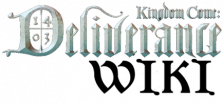The Jews settled in Moravia and Bohemia probably even earlier than the 10th century. Initially they were considered foreigners who the Romans had banished into exile. Jewish traders in the Czech lands settled largely around the long-distance trade routes, in major centres, which in the early Middle Ages were: Olomouc, Brno, Znojmo and the central Elbe River environs. Most lived in Prague, however. Records tell of about 120 houses in a demarcated Jewish quarter of the Old Town. They were under the legal protection of decrees by Wenceslas II and subsequently Charles IV. Over the centuries, however, the flourishing of their activities as merchants and financiers gave rise to protests from many elements of society, in particular the Catholic Church. The Jews had indeed imported valuable gold and used it to barter for horses, furs or slaves. Their rights became progressively circumscribed: they could not buy land or houses, had to lived in specially designated ghettos, were allowed to lend money at interest (usury) and to trade only where they were not in competition with locals, and were prohibited from working as craftsmen or farmers. The segregation of Jews was also underlined by enforced labelling: they had to wear, for example, a yellow circle or yellow ribbon on their garments, or a specifically shaped hat, the women had to have a yellow ribbon in their hair and the men mandatory beards. No help came from the Church, which traditionally laid the blame on them for being the ‘killers of Christ’ and for adhering to pagan rituals.
In the Middle Ages, the Jews were considered the ‘King’s own’ and under his protection, so that if the townspeople were inclined to commit a pogrom (to set fire to the quarter and massacre the inhabitants), they would have to pay the King hefty ‘reparations’. Some Kings looked forward to such pogroms as a good source of income, others protected ‘their’ Jews. For example, Wenceslas IV granted the Prague Jews the right to their own town within Prague, with its own wall and six gates, but even this failed to protect them from the pogrom in 1389, when the King was travelling abroad. After his return he levied the ultimate punishment on the organizers of the pogrom, which quelled further attacks for some time, though they made a comeback with the Hussite movement.
The Jews settled in Moravia and Bohemia probably even earlier than the 10th century. Initially they were considered foreigners who the Romans had banished into exile. Jewish traders in the Czech lands settled largely around the long-distance trade routes, in major centres, which in the early Middle Ages were: Olomouc, Brno, Znojmo and the central Elbe River environs. Most lived in Prague, however. Records tell of about 120 houses in a demarcated Jewish quarter of the Old Town. They were under the legal protection of decrees by Wenceslas II and subsequently Charles IV. Over the centuries, however, the flourishing of their activities as merchants and financiers gave rise to protests from many elements of society, in particular the Catholic Church. The Jews had indeed imported valuable gold and used it to barter for horses, furs or slaves. Their rights became progressively circumscribed: they could not buy land or houses, had to lived in specially designated ghettos, were allowed to lend money at interest (usury) and to trade only where they were not in competition with locals, and were prohibited from working as craftsmen or farmers. The segregation of Jews was also underlined by enforced labelling: they had to wear, for example, a yellow circle or yellow ribbon on their garments, or a specifically shaped hat, the women had to have a yellow ribbon in their hair and the men mandatory beards. No help came from the Church, which traditionally laid the blame on them for being the ‘killers of Christ’ and for adhering to pagan rituals.
In the Middle Ages, the Jews were considered the ‘King’s own’ and under his protection, so that if the townspeople were inclined to commit a pogrom (to set fire to the quarter and massacre the inhabitants), they would have to pay the King hefty ‘reparations’. Some Kings looked forward to such pogroms as a good source of income, others protected ‘their’ Jews. For example, Wenceslas IV granted the Prague Jews the right to their own town within Prague, with its own wall and six gates, but even this failed to protect them from the pogrom in 1389, when the King was travelling abroad. After his return he levied the ultimate punishment on the organizers of the pogrom, which quelled further attacks for some time, though they made a comeback with the Hussite movement.
